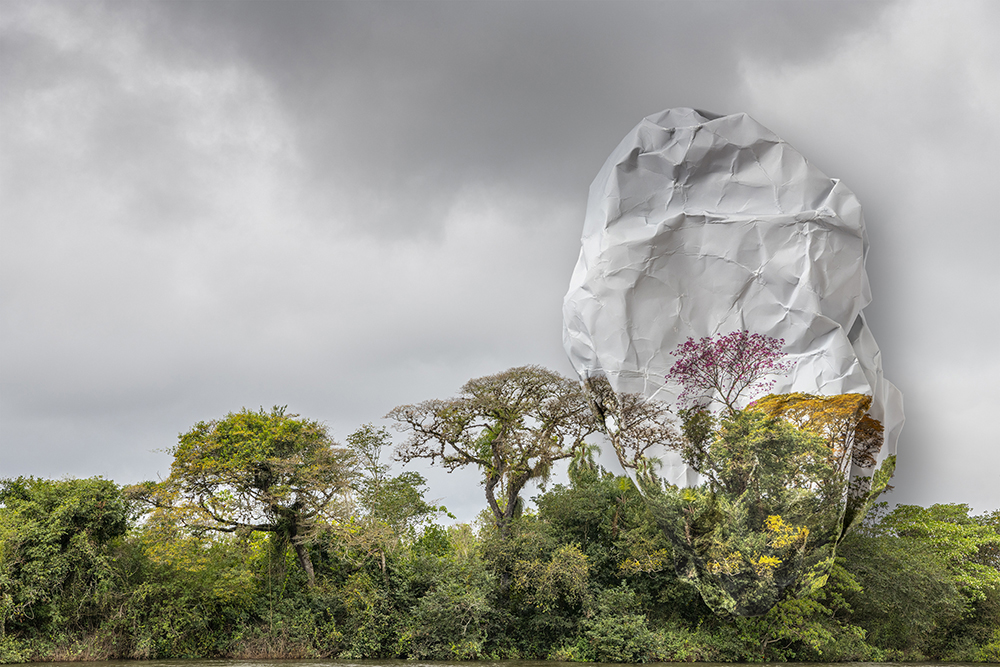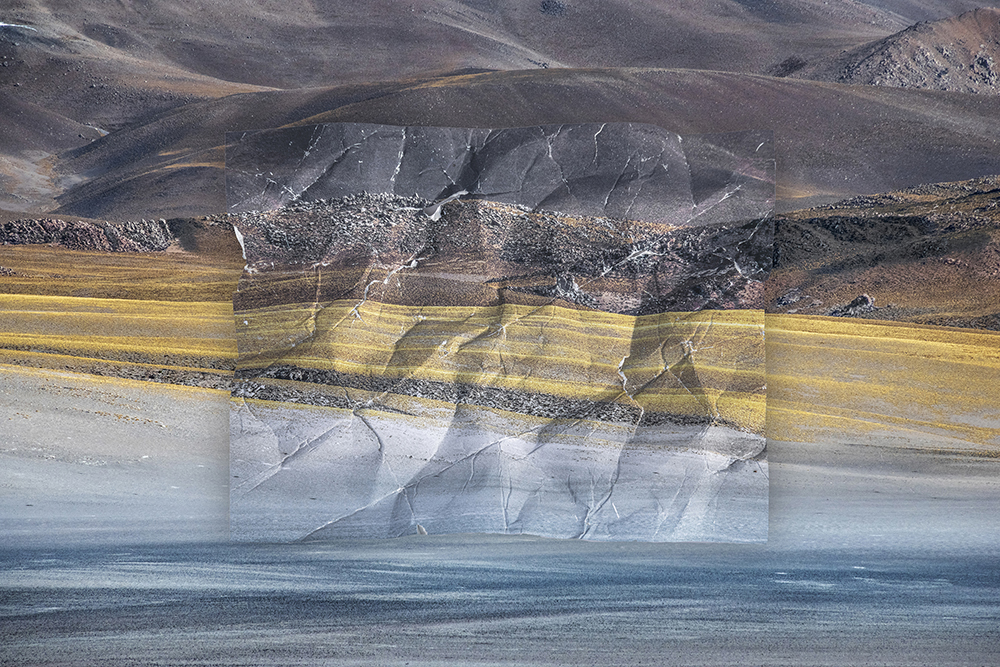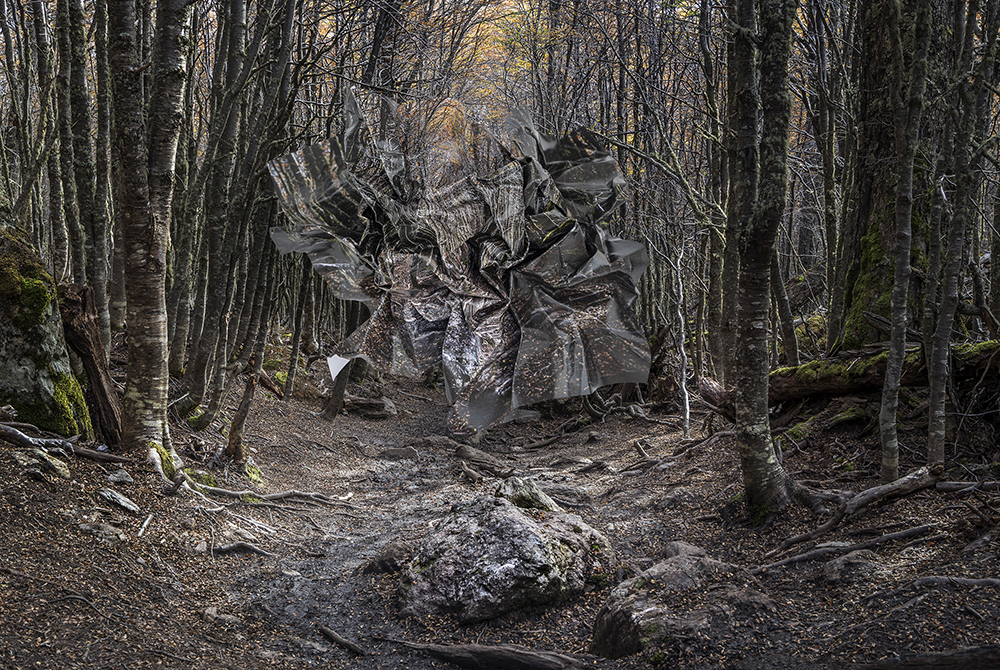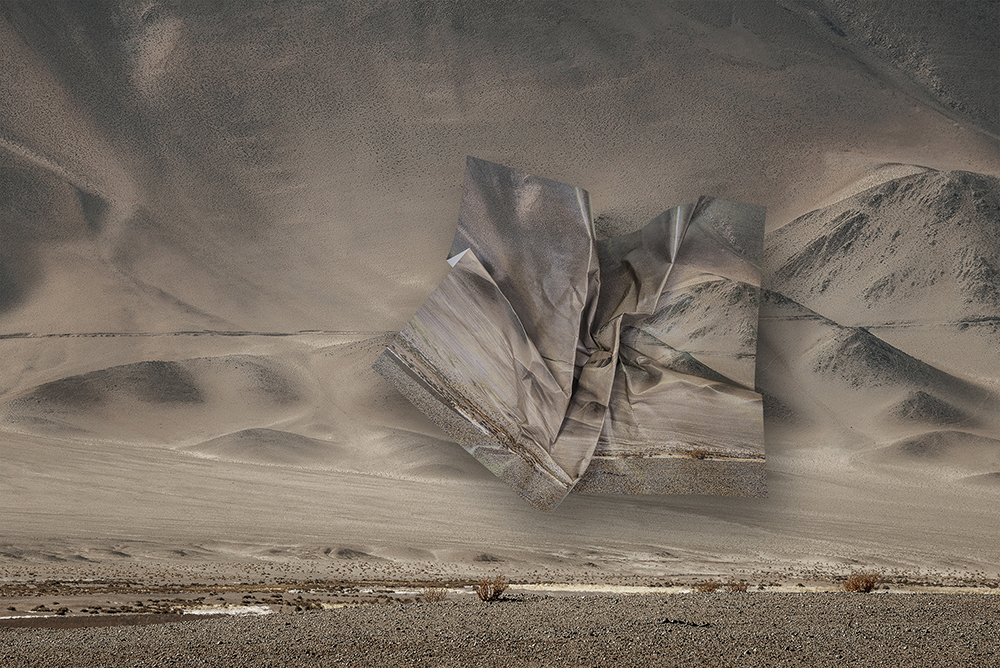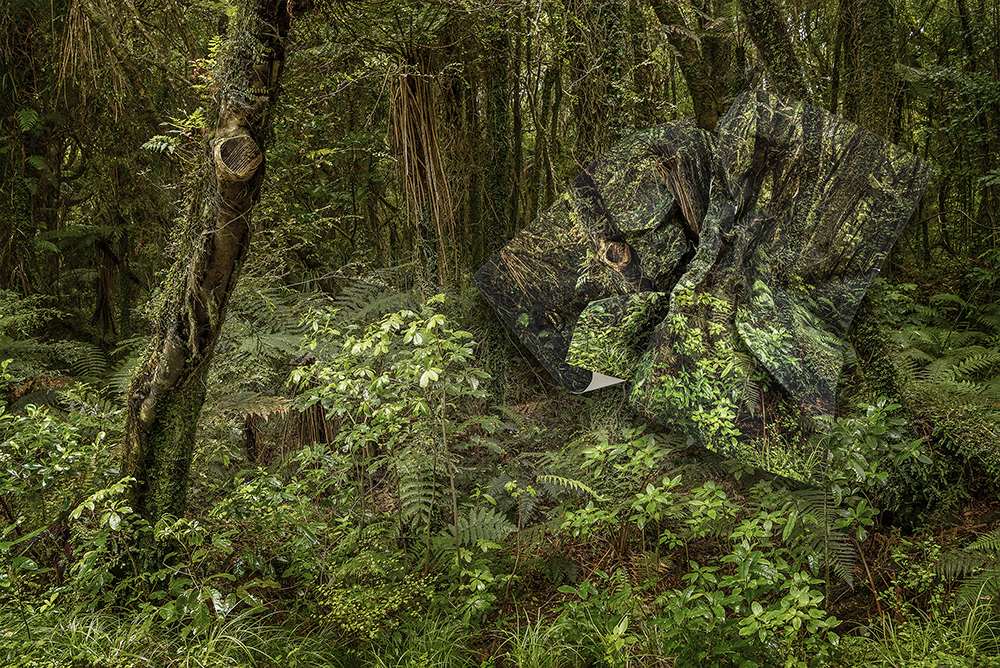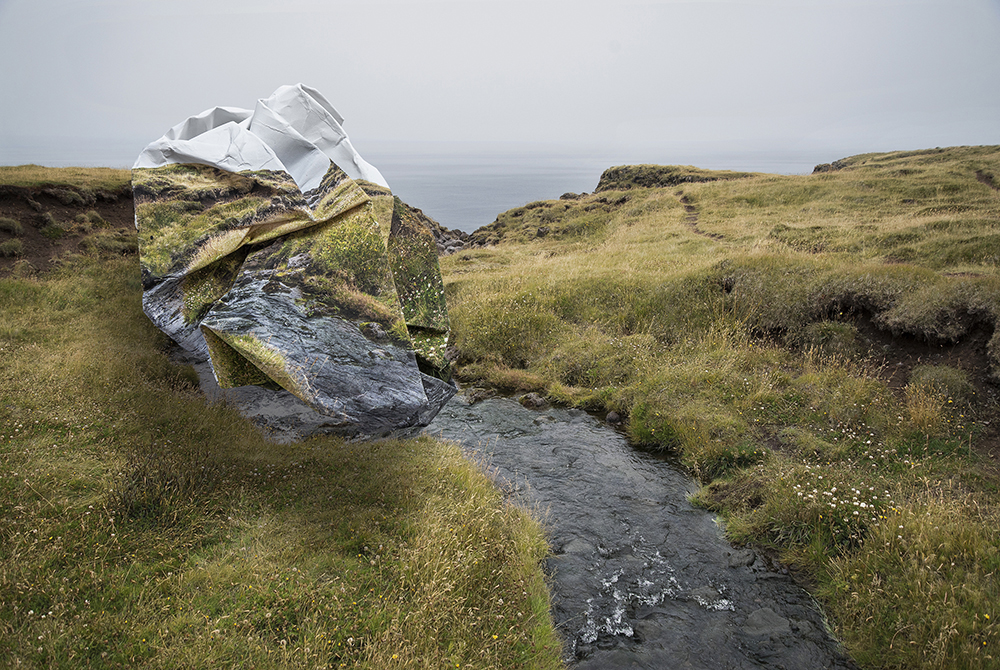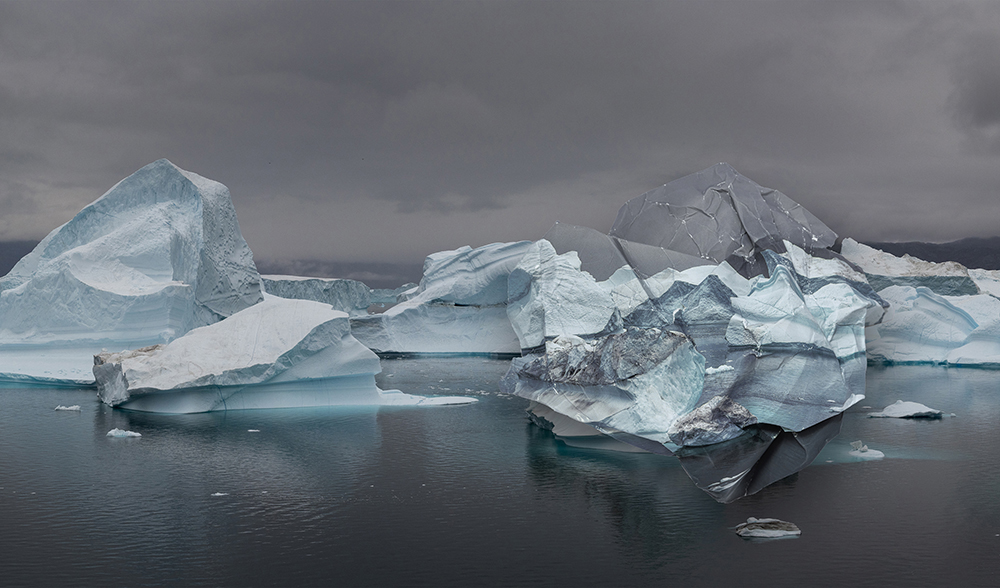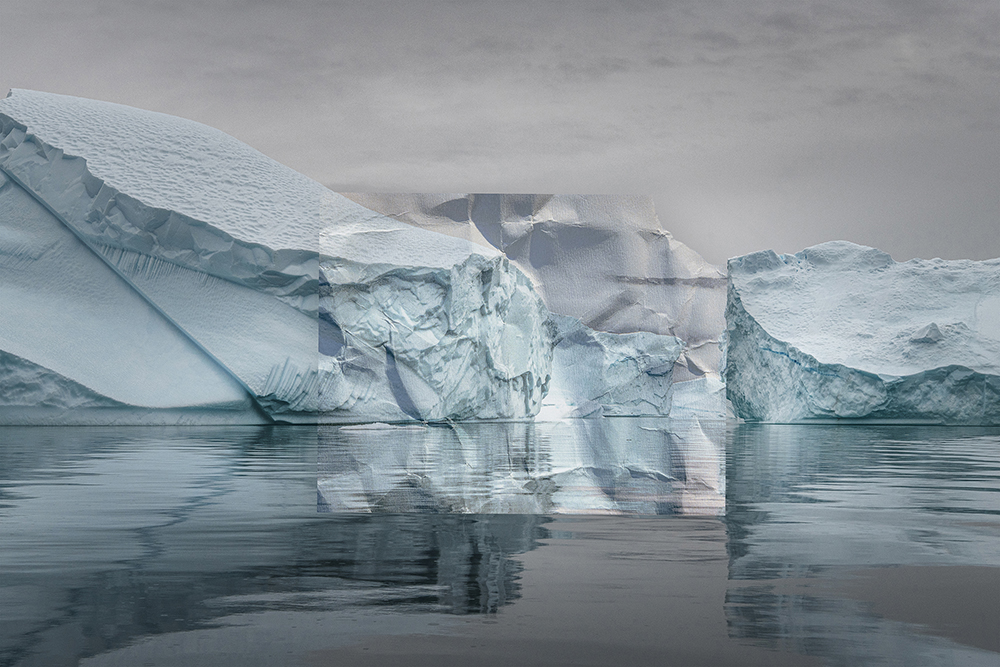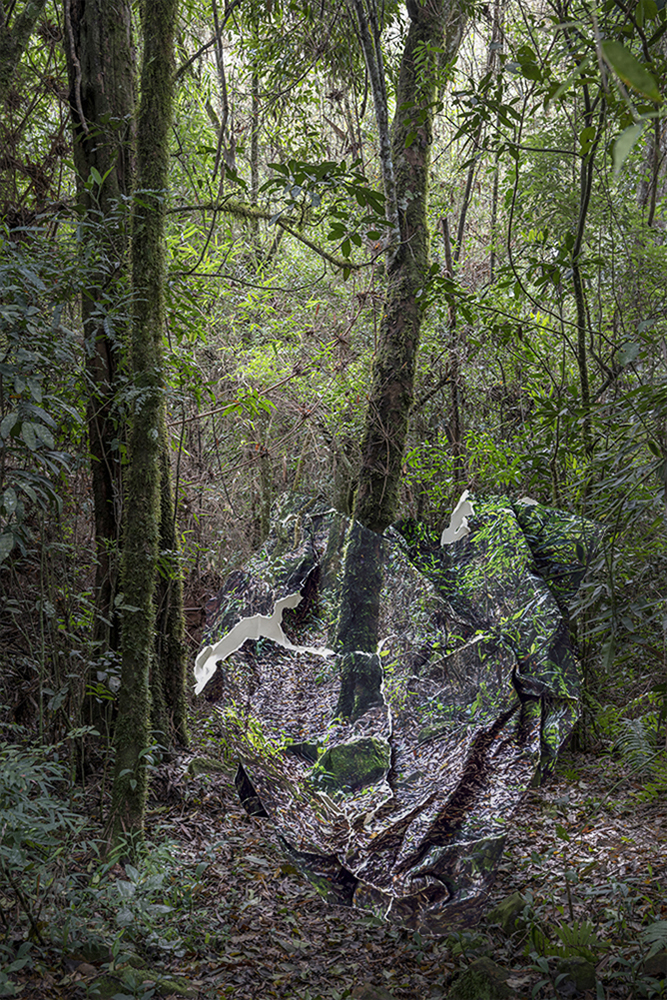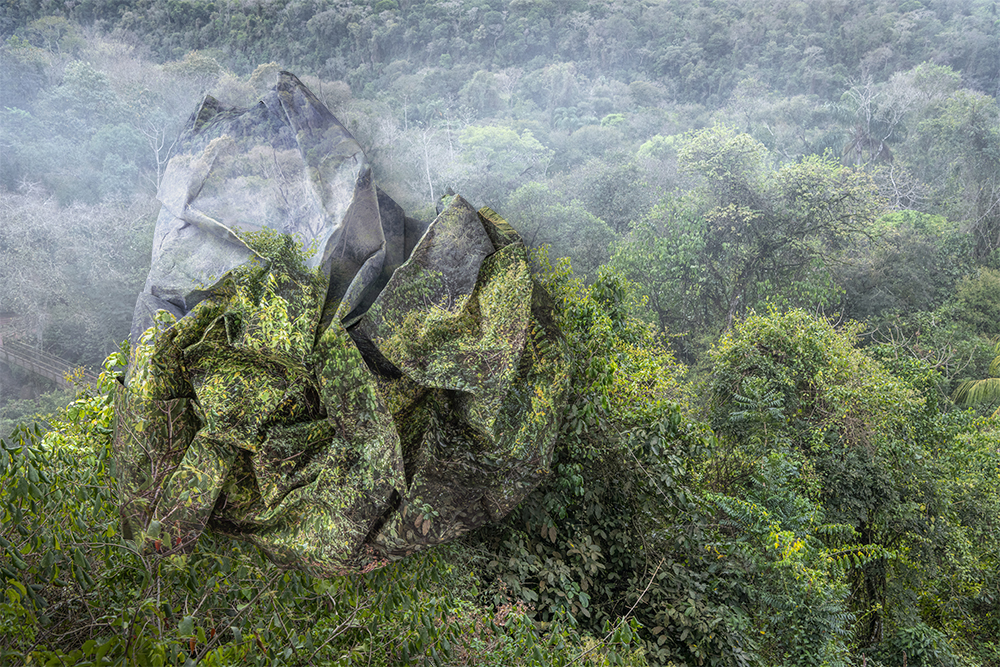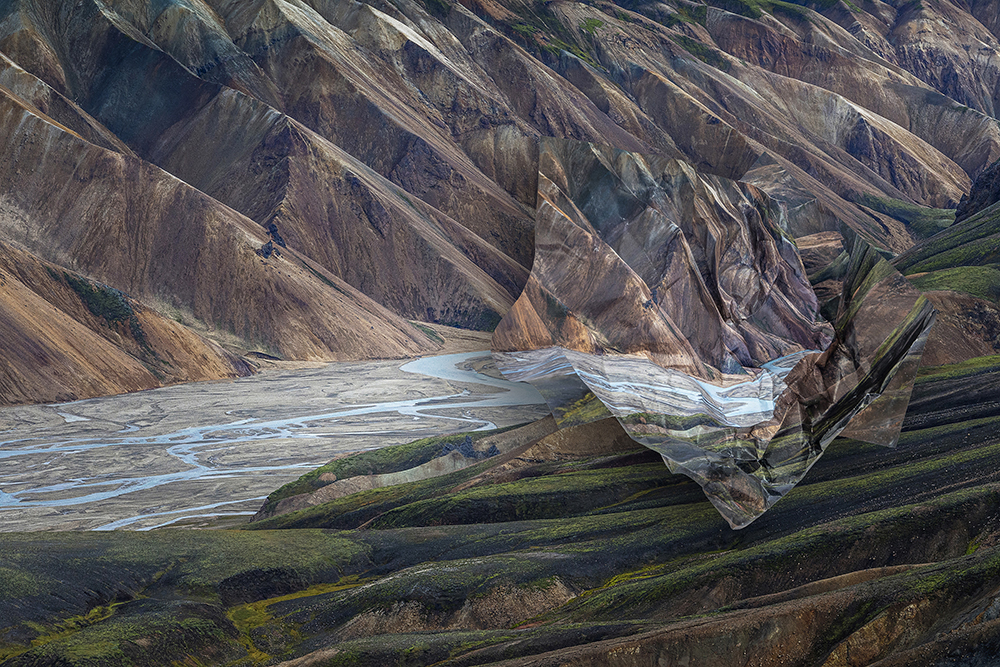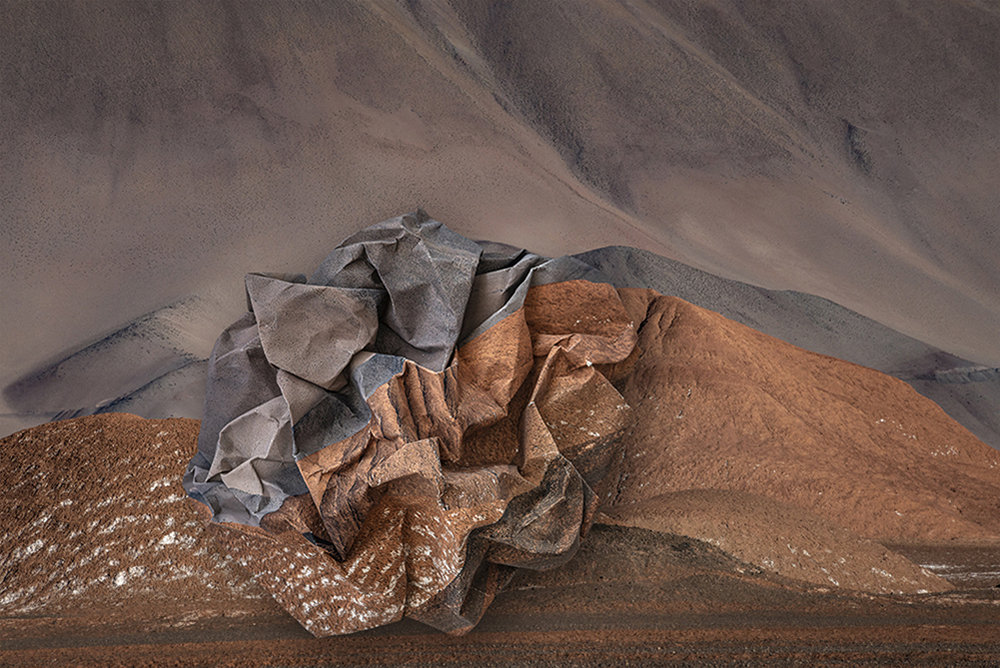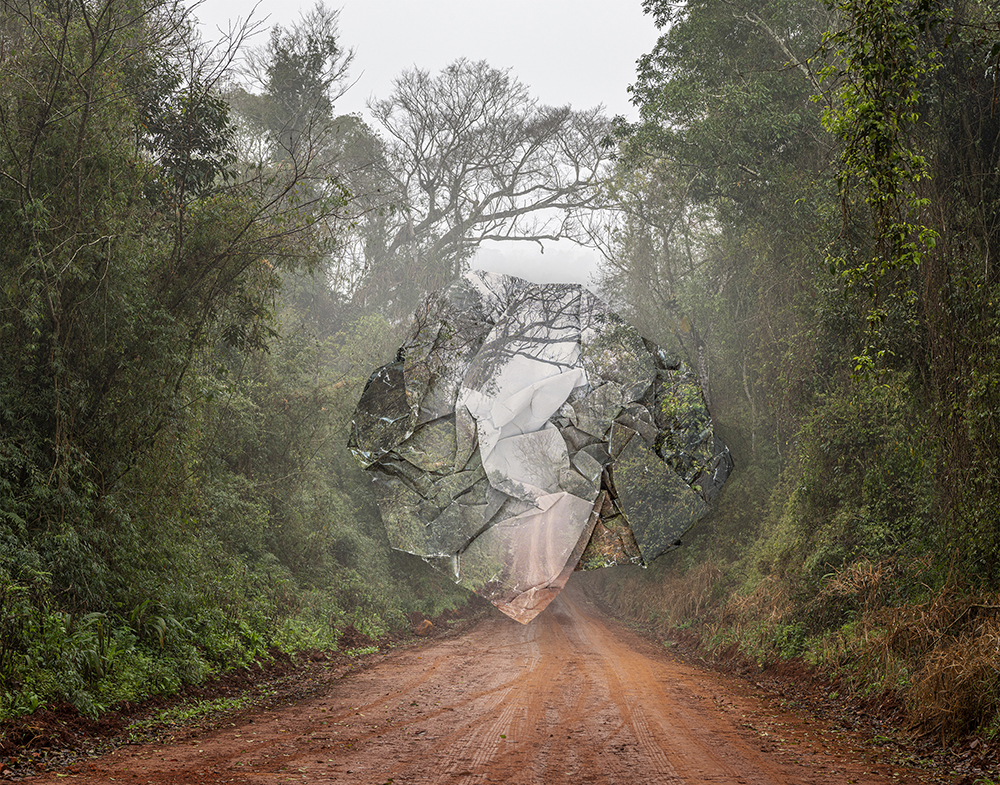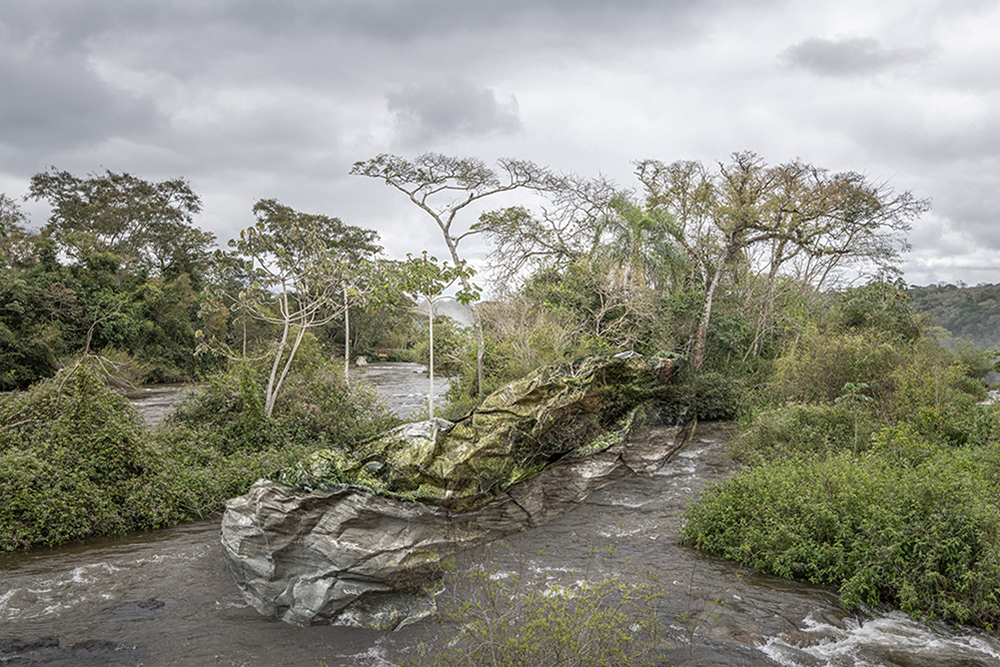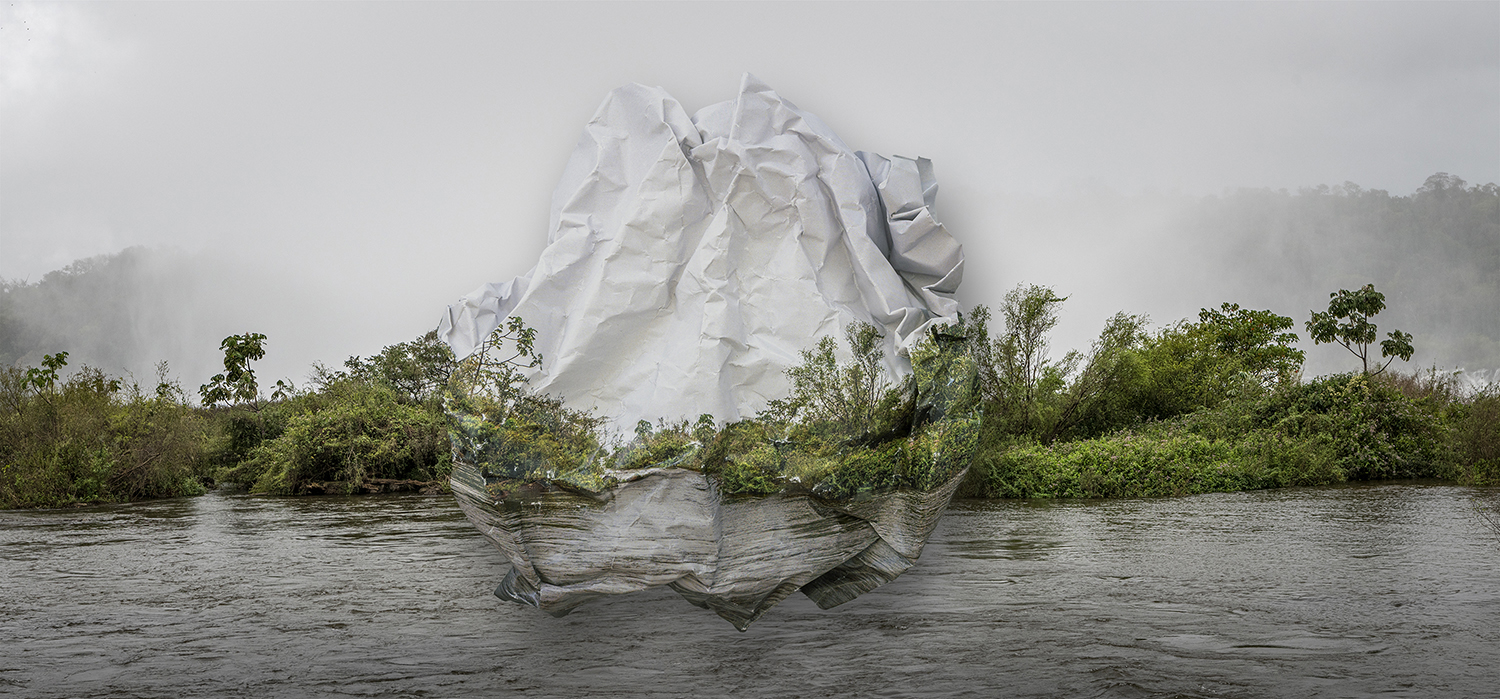Ingrid Weyland: Topographies of Fragility
For the next two weeks, we are looking back at some of our favorite posts of 2022. Today, we revisit the series Topographies of Fragility by Ingrid Weyland.
Ingrid Weyland was born in Buenos Aires, Argentina. Being part of a family of sculptors and architects, she grew up among color pencils, art papers, blueprints, inks, and clay. Consequently, she could spend hours around these materials. Her passion for form, image, and composition arises from them, which led to her studying Graphic Design at the University of Buenos Aires (UBA) and working in her study for several years. Later she decided to dedicate herself to learning photography, something she had always been passionate about, attending several workshops by Ana Sánchez Zinny, Angela Copello, Fabiana Barreda, Julieta Escardó, Juan Brath, Proyecto Imaginario, and Verónica Fieiras, amongst others. Initially a portrait photographer, Ingrid now focuses on evocative landscapes and the fragility of the natural environment.
In 2020 she was one of the winners of Decade of Change by 1854 British Journal of Photography, the Exposure Photo Festival in Calgary, and won the Ashurst Emerging Artist Photography Prize. In 2021 she was a finalist in the Discovery Awards – Encontros da Imagem in Braga, in Fresh Klompching Gallery Exhibition (NY), and also won the Rhonda Wilson Award.
Her work has been exhibited in cultural institutions and galleries in Argentina, London, Canada, New York, and Hong Kong: Arte Espacio (2016), Buenos Aires Photo International Fair with ASZ Gallery (2019-2020), Photo London Digital with ASZ Gallery (2020-2021), Exposure Photo Festival (2021), 1854 BJP Decade of Change Exhibition at The Climate Museum (2021), the Klompching Gallery Fresh 2021 Exhibition, and the Ashurst Emerging Artist Photography Prize Solo Exhibition (2021), among others.
Topographies of Fragility
Since my first projects, even when I incorporated portraits in my narratives, my interest revolved around nature as an emotional haven, a place for connection.
My intention has always been to deeply experience spaces and convey a sense of silence through my imagery, a time for contemplation and introspection.
I have traveled from the south of Argentina to Greenland’s ice sheet in search of landscapes with a particular mood and beauty, unspoiled landscapes, almost surreal. The presence of man seems not to exist. They appear to be places that have never been inhabited, solitary, where the immensity reveals itself, and where I have lived experiences of intimate connection with this isolated nature, almost like a private sanctuary.
It was in those moments, where it became clear that nature is also vulnerable, fragile. It is perhaps because of this feeling that, back home, I devised a strategy to try to return the gesture to nature. As a tribute, and possible farewell, to my emotional haven, which has experienced severe environmental degradation, and through the materiality of the printed image, I intend to highlight the violent damage they suffer, manipulating and twisting my own personal landscapes. In these landscapes that at first glance seem so pristine and immaculate, we then notice their decline, their deterioration, which becomes a wake-up call, a way of questioning our relationship with the natural world.
I am increasingly interested in the concept of Expanded Photography, where photography merges with other areas of the visual arts, such as collage or different types of manual interventions. Pure photography was no longer enough to translate my experiences and concerns.
My process begins with the registration of my experiences in nature and continues with a meticulous selection of which landscapes from my archive of images will be subjected to experimentation and intervention, and is completed with a new photographic shot.
In the series “Topographies of Fragility,” I alter, and perform violent gestures on the image of the landscape chosen, which is then the laid on top of the same untouched photographic vista. This operation on the printed photographic paper allows me to reflect on the permanent and irreversible traces of my actions, in a poetic allusion to our relationship with our planet.
My current work is not meant to be documentation about specific environmental problems of the photographed spaces, but rather a metaphor of the fragility of nature, as well as of human fragility itself, and my intention is to incite in the viewer a sense of self-reflection, to raise awareness and make my small contribution, so that we humans can begin to think of a world in harmony with nature and understand that we are part of an alliance, nature, and humans, together.
It is said that a crumpled piece of paper can never regain its original shape; the trace persists. In the same way, nature which is disrespectfully invaded is forever broken, and many times unrecoverable.
Daniel George: What prompted your interest in landscape photography—particularly in illustrating decline and deterioration?
Ingrid Weyland: I have always been very attracted and inspired by nature, it was a place where I could feel safe, a place of connection. I am somehow always drawn to feelings of emptyness in the landscape, which, strangely, is fullfilling at the same time. I like to capture moments of serenity and stillness in nature, a vanishing beauty in grave danger.
I was lucky enough to travel from the south of Argentina to Greenland’s ice sheet, in search of landscapes with a particular mood and beauty, unspoiled landscapes, almost surreal, where the immensity reveals itself, and where I have lived experiences of intimate connection with this timeless and placeless nature.
Iceland, with its intensity and abundance of color in its lava fields, glaciers, fjords and mountain peaks, has struck me as one of the most majestic places to photograph, it’s literally like visiting another planet. It makes me think of a pre-human era, a time of virgin nature.
It was after my third trip to Iceland that I was overwhelmed by the changes I saw since my first visit in 2015. It had become a tourist hotspot, and it started to show on the landscape, traces of vehicles, people failing to stick to regulations, the noise of drones flying everywhere… this exact moment determined my urgency to inspire change.
DG: These photographs depict landscapes from Argentina to Greenland. What is your connection to these specific places, and why were you compelled to photograph them?
IW: I spend much of my time in Patagonia, where you are surrounded by magnificent landscapes without having to search for them. So my love for breathtaking sceneries is a natural one and therefore I feel that illustrating damage and deterioration is my contribution to protecting such blessings from nature.
Patagonia and Greenland both qualify as “last frontier” territories and this is a compelling connection. Although I have not yet visited Antarctica, which has been my dream for the last years, the Arctic and Antarctic areas play key roles in the future of climate change.
I am much attracted to this concept; to the preservation of the little which remains untouched and therefore the desperate need to protect our planet’s last frontiers.
DG: What led you to start folding and reshaping the prints as part of your process?
IW: After a few photography trips to different countries, I realized that I had acquired quite an archive of images, and thought I needed to make something useful of them. I work at home, in a small study, and at the end of 2019, I was organizing my prints and realized that I had kept many defective prints that because of space, I needed to part with. It took me quite a while to do this because I feel sentimentally attached to my landscapes, but finally I took one, crumpled it, and threw it at the bin. I felt very guilty about it, and when I saw the creased paper, I immediately sensed that that’s the way we humans treat nature sometimes, like it’s something disposable, to be discarded. The word “paper” started to vibrate in my head.
Soon after that I went on a trip to Greenland, where Icebergs come in different shapes and sizes, and according to this they are categorized into different types, they can be tabular, domed, pinnacled, and there was a massive one that was all faceted, the light reflected on it in peculiar ways, and it reminded me of crumpled paper. The idea of “paper” again.
Witnessing such magnificent nature and thinking about its vulnerability, I started to work on enacting physically violent gestures on my printed landscape images, twisting and reshaping them until they became something utterly different. In between trying alternate ways of crumpled imageries, I lay them on top of the same photographic vista, and rephotograph.
It’s also amazing to notice that paper resists at first, it fights back, it does not want to be destroyed, but at last, it has to give in…
DG: It is evident that your interest in materiality stems from your family’s background in sculpture and architecture. Could you talk more about your preference in working with physical materials within your creative practice?
IW: Although I have a very strong legacy in sculpture and architecture in addition to my academic studies in Graphic Design, my current project has, furthermore, to do with my evolution as a photographer.
I am increasingly interested in the concept of “Expanded Photography”, where photography merges with other areas of the visual arts, such as collage or different types of manual interventions. Pure photography was no longer enough to translate my experiences and concerns, so I decided to try new ways of expression; I love to experiment and defy the limits of photography, as well as my own limits.
I intend for the viewer to be challenged by my work; it requires an active participation, needing more than one looking. Inicially, you are drawn to the beauty of the scene, and only after, you are able to understand its vulnerable character, reminding us what we stand to lose to climate change.
DG: How would you say that these images fit within the broader context and history of photographs depicting our relationship and effect on the natural world? How do they expand the conversation?
IW: My work aims precisely to highlight the immediate need for concrete action following the work of many colleagues with a similar calling before me. My raw comparison between natural beauty and irreversible man created damage shows people not something that could happen in the future unless we change but, sadly, the dramatic reality that we may already be too late.
I think that the fact that I physically and violently manipulate photography’s materiality, paper, with my own two hands, drastically parallels man’s treatment of the nature that surrounds us. It’s the symbolic power of photography.
My intention in this photographic work, is not the mere documentation of actual places or breathtaking geographic locations, it is not to gift answers, but rather to provoke an emotional impact, a reaction, a message that cannot be ignored.
Posts on Lenscratch may not be reproduced without the permission of the Lenscratch staff and the photographer.
Recommended
-
Luther Price: New Utopia and Light Fracture Presented by VSW PressApril 7th, 2024
-
Artists of Türkiye: Sirkhane DarkroomMarch 26th, 2024
-
European Week: Sayuri IchidaMarch 8th, 2024
-
European Week: Steffen DiemerMarch 6th, 2024
-
Rebecca Sexton Larson: The Reluctant CaregiverFebruary 26th, 2024

